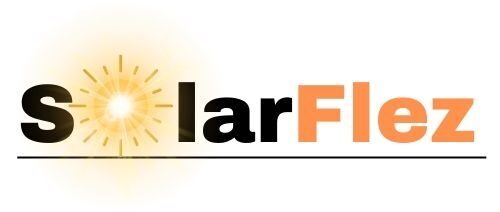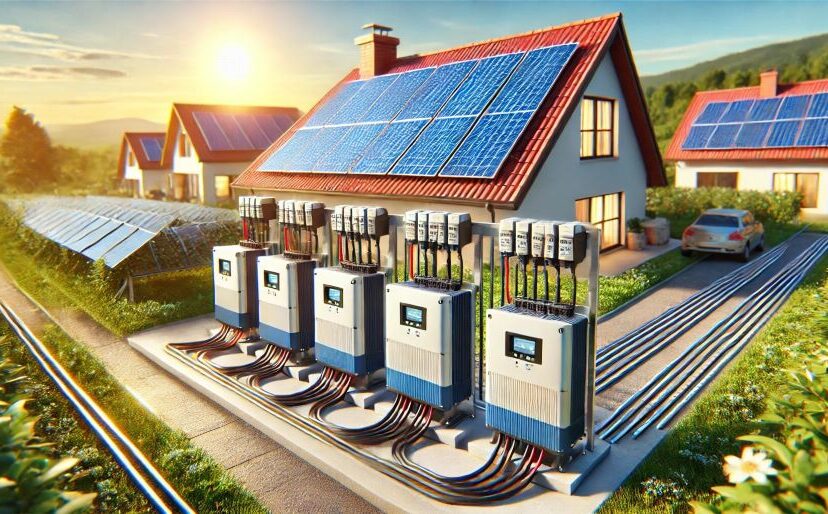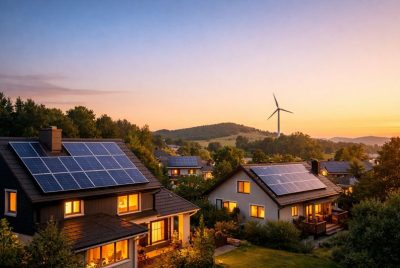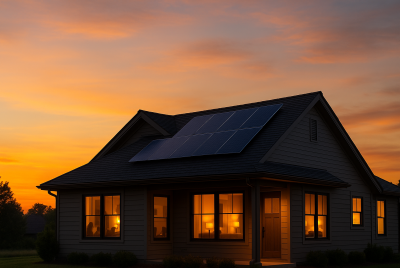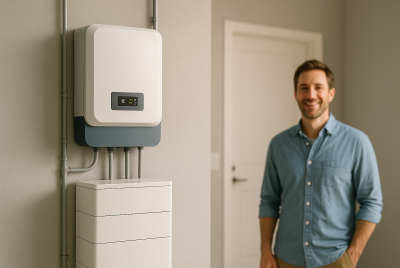Solar Power Inverters: Harnessing the Sun’s Energy Efficiently
Hey there, solar enthusiasts and curious cats! Ever wondered how those shiny panels on your roof actually power your Netflix binges? Well, buckle up, because we’re about to take a wild ride into the world of solar power inverters – the unsung heroes of your solar setup.
What is a Solar Power Inverter?
Picture this: you’ve got a foreign pen pal who only writes in Klingon. You can’t read Klingon, so you need a translator. That’s exactly what a solar power inverter does! It’s the gadget that translates the Direct Current (DC) electricity your solar panels produce into the Alternating Current (AC) electricity your home devices crave. Without this nifty translator, your solar panels would be about as useful as a chocolate teapot.
Why Do You Need a Solar Power Inverter?
Remember that time you tried to charge your phone with a banana? No? Well, that’s because it wouldn’t work! Just like you need the right charger for your phone, your home needs an inverter to use the electricity from your solar panels. It’s the middleman that makes the magic happen.
Types of Solar Power Inverters
Alright, let’s break down the different flavors of inverters out there:
- String Inverters Think of these as the OG inverters. They’re like the team captain, connecting a whole string of solar panels. Simple and effective, but if one panel gets shaded or dirty, it can drag down the whole team’s performance. It’s like that one friend who always ruins the group photo.
- Microinverters These little dudes are like having a mini-inverter for each panel. It’s like giving each of your solar panels its own personal trainer. They’re great for maximizing output, especially if you’ve got some shady spots on your roof. More expensive, but hey, sometimes you gotta splurge for the good stuff.
- Power Optimizers Think of these as a hybrid solution. They’re like having a personal coach for each panel, but still reporting to a head coach (the central inverter). Best of both worlds, if you ask me. It’s like having a really efficient middle management system, but for your solar setup.
- Hybrid Inverters These are the Swiss Army knives of inverters. They can handle both solar power and battery storage. Handy if you’re thinking about adding some juice-storing capabilities to your setup down the line. It’s like having a fridge that’s also a time machine – versatile and future-proof!
How Does a Solar Power Inverter Work?
Okay, I’m not gonna bore you with all the technical mumbo-jumbo, but here’s the gist: The inverter takes the DC electricity from your panels and basically shakes it up real fast to create AC electricity. It’s kinda like how you might shake up a bottle of orange juice to mix it – except, you know, with electricity. Then it makes sure the voltage is just right for your appliances and syncs it up with the grid power. Pretty cool, huh?
Benefits of Solar Power Inverters
Now, you might be thinking, “Why should I care about all this inverter jazz?” Well, let me tell ya:
- Efficiency: These babies make sure you’re squeezing every last drop of power out of those sunshine-catching panels. It’s like getting the last bit of toothpaste out of the tube – satisfying and economical!
- Grid Connectivity: With the right inverter, you can actually sell excess power back to the grid. Cha-ching! It’s like your roof is running a lemonade stand, but instead of lemonade, it’s selling sunshine.
- Safety: Modern inverters are like the bouncers of your electrical system. They’ll shut things down if they detect any funny business, keeping your home safe from electrical gremlins. It’s like having a tiny, electricity-savvy bodyguard.
Choosing the Right Solar Power Inverter
Picking an inverter can feel like trying to choose the perfect avocado at the grocery store – overwhelming and high-stakes. Here are some tips to make it easier:
- System Size: Make sure your inverter can handle the output of your solar array. You don’t want a pipsqueak trying to manage a powerhouse.
- Efficiency Ratings: Look for high efficiency ratings. The higher, the better – it means less energy wasted in the conversion process. It’s like choosing a car with good gas mileage, but for electricity.
- Warranty and Support: Choose a brand that’ll have your back if things go south. A solid warranty is worth its weight in gold – or at least in silicon.
Installation and Maintenance of Solar Power Inverters
Now, I know some of you DIY enthusiasts out there might be itching to install this yourself. But trust me, unless you’re an electrician with solar experience, leave this one to the pros. It’s not worth risking a fried system (or worse, a fried you).
As for maintenance, it’s pretty low-key. Just keep an eye out for any weird noises or error messages, and maybe give it a dusting now and then. Think of it like taking care of a low-maintenance pet – it doesn’t need much, but a little attention goes a long way.
Cost of Solar Power Inverters
I’m not gonna sugarcoat it – these things ain’t cheap. But remember, you get what you pay for. A good inverter is an investment in the efficiency and longevity of your entire solar system. It’s like buying good tires for your car – spend a little more upfront, and you’ll save in the long run.
Common Problems with Solar Power Inverters
Even the best inverters can have off days. Here are some common hiccups:
- Overheating: If your inverter’s running hotter than a jalapeño popper, make sure it’s got good ventilation. Nobody likes a sweaty inverter.
- Fault Codes: Modern inverters speak in code. If you see a weird message, don’t panic – just check the manual or give the manufacturer a ring. It’s like your inverter is trying to tell you a secret, but in its own language.
- Reduced Efficiency: If your system’s not performing like it used to, it could be due to shading, dirty panels, or just old age. Regular check-ups can help nip these issues in the bud. It’s like giving your solar system a spa day – sometimes it just needs a little pampering to perform its best.
The Future of Solar Power Inverters
Hold onto your hats, folks, ’cause the future of inverters is looking bright (pun intended). We’re talking even higher efficiency, smarter monitoring systems, and seamless integration with your smart home gadgets. Soon, your inverter might be chatting with your coffee maker to brew your morning joe using the optimal amount of solar power. The future is now!
Environmental Impact of Solar Power Inverters
Let’s not forget the bigger picture here. By using solar power and efficient inverters, you’re doing your bit to kick our fossil fuel habit. It’s like going on a carbon diet – good for you, and good for the planet. Your grandkids will thank you for being such a cool, eco-friendly grandparent.
Popular Solar Power Inverter Products
Now, I’m not here to play favorites, but there are some inverters out there that are turning heads:
- Enphase IQ7 Microinverter Series: These little powerhouses are like the Special Forces of the inverter world – small, tough, and efficient. They’re the Navy SEALs of the solar world.
- SMA Sunny Boy String Inverter: This is like the Swiss watch of inverters – reliable, precise, and built to last. It’s the kind of inverter that would never stand you up on a date.
- SolarEdge HD-Wave Inverter: Compact and clever, this one’s like the smartphone of inverters – small but mighty. It’s got more tricks up its sleeve than a magician at a kids’ party.
- Fronius
- Primo Inverter: Known for its durability, this is the inverter equivalent of a trusty old pickup truck. It’ll keep on truckin’ long after others have given up.
Key Features to Look for in Solar Power Inverter Products
When you’re shopping around, keep an eye out for:
- High efficiency ratings: More bang for your buck!
- Solid warranties: Because peace of mind is priceless.
- Good monitoring capabilities: So you can keep tabs on your system’s performance.
- Compatibility: Make sure it plays nice with your panels and any other gizmos in your system.
- Durability: You want an inverter that can weather the storm (literally and figuratively).
Frequently Asked Questions about Solar Power Inverters
Let’s wrap this up with some quickfire Q&A:
- How long do solar power inverters last? Usually 10-15 years, but with TLC, they can keep chugging along even longer. It’s like a good marriage – with proper care and attention, it can last a lifetime.
- Can I use any inverter with my solar panels? Nope, it’s gotta be compatible. Ask a pro to make sure you’re not trying to fit a square peg in a round hole. It’s like dating – compatibility is key!
- How do I know if my inverter is working correctly? Most have lights or displays to show their status. If in doubt, check the manual or call in an expert. It’s like checking your car’s dashboard – if something’s off, it’ll let you know.
- Do inverters make noise? A bit of humming is normal, but if it sounds like a blender full of marbles, something’s probably wrong. It should be more of a gentle purr than a roar.
- Can I install a solar power inverter myself? Unless you’re a qualified electrician with solar experience, I’d leave this one to the pros. Better safe than sorry! It’s not like assembling IKEA furniture – one wrong move and you could be in for a shock (literally).
Summary
So there you have it, folks – everything you never knew you wanted to know about solar power inverters. These little boxes of wizardry are what make solar power tick. They’re the unsung heroes turning sunshine into Netflix binges and ice-cold beers.
Remember, a good inverter is crucial for:
- Translating solar power into usable electricity
- Maximizing the efficiency of your solar system
- Ensuring safe operation
- Potentially selling power back to the grid
When choosing an inverter, consider:
- The size and type of your solar system
- Efficiency ratings
- Warranty and support options
- Future expandability needs
And don’t forget, proper installation and maintenance are key to getting the most out of your inverter. It’s like taking care of a high-tech pet – give it some love, and it’ll serve you well for years to come.
So next time you flip on a light switch powered by solar, give a little nod to your hardworking inverter. It’s doing the heavy lifting so you can keep your cool (literally and figuratively). And hey, now you’ve got some prime solar small talk for your next barbecue. You’re welcome!
Now, if you’ll excuse me, all this talk of power has me feeling a bit drained. Time to go soak up some sun and recharge my own batteries! Keep it sunny, folks!
